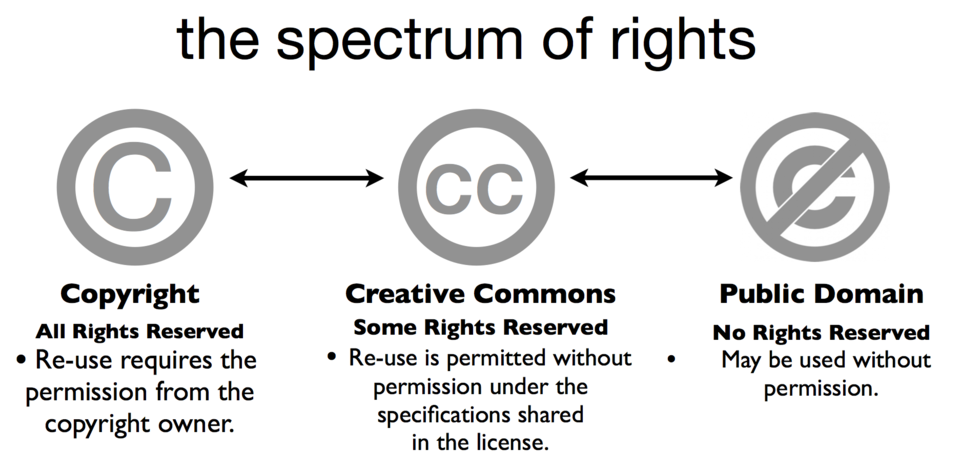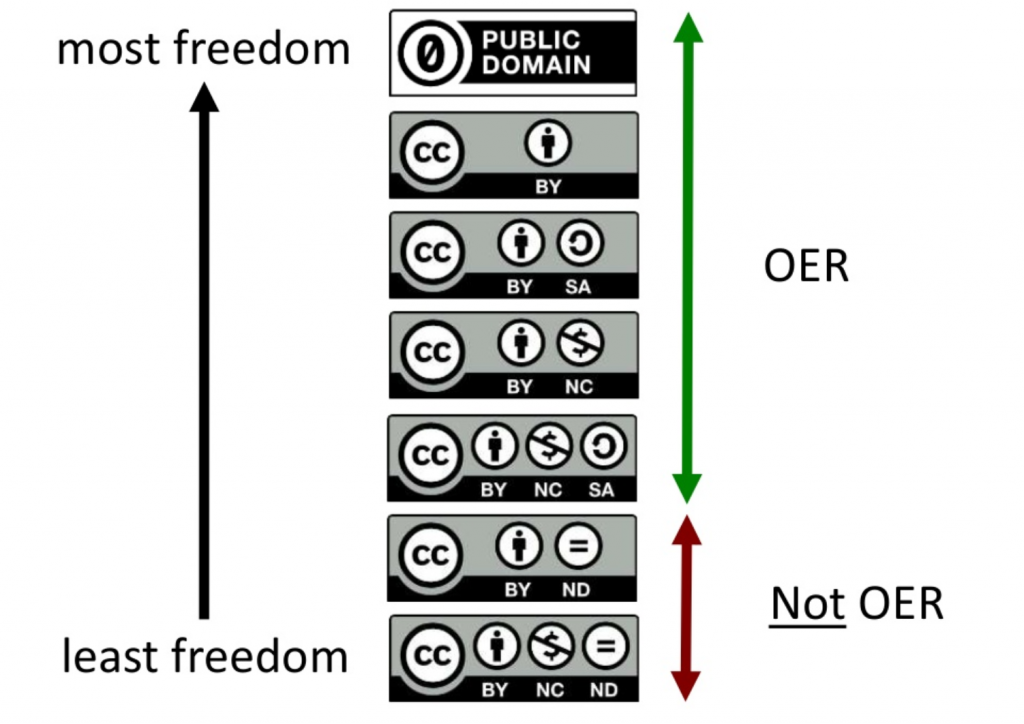9 Open Licenses
UTA Libraries help OER creators determine which open license will give them the type of ownership they want, while still allowing their work to be reused and remixed freely.
An open license is a way for creators to proactively communicate to the public about how copyrighted material can and cannot be used. Open licensing options fill the gap between “all rights reserved” copyright (which protects everything from storing copies of a work to modifying the work) and the public domain (no copyright protection). Popular open licensing mechanisms, such as Creative Commons (CC), allow creators, remixers, and content users to quickly and easily understand how we can legally use and adapt other people’s work. CC-licenses are easy to recognize and apply to your own work. A license can be applied to anything copyrightable, such as books, blogs, music, videos, images, software, data, and more!

Creative Commons Licenses
There are six major CC-licenses that all include different combinations of four basic requirements.[1]

 Attribution
Attribution
You let others copy, distribute, display, and perform your copyrighted work—and derivative works based upon it —but only if they give you credit the way you request. This element is a part of all six licenses.
 Non-Commercial
Non-Commercial
You let others copy, distribute, display, and perform your work —and derivative works based upon it—but for noncommercial purposes only.
 No Derivatives
No Derivatives
You let others copy, distribute, display, and perform only exact copies of your work, not derivative works based upon it.
 Share Alike
Share Alike
You allow others to distribute derivative works only under a license identical to the license that governs your work.
The six licenses and the Creative Commons’ Public Domain designation are shown below in order of the amount of freedom they provide for users. The spectrum includes two licenses that are not OER because they do not allow for revision and remix (i.e., CC BY-ND and CC BY-NC-ND).

- The text describing CC-license components originally appeared in "The Beauty of ‘Some Rights Reserved’” by Molly Kleinman, published in College & Research Libraries News in November 2008. This version is licensed under the Creative Commons Attribution-NonCommercial 4.0 (CC BY NC 4.0) license. ↵

